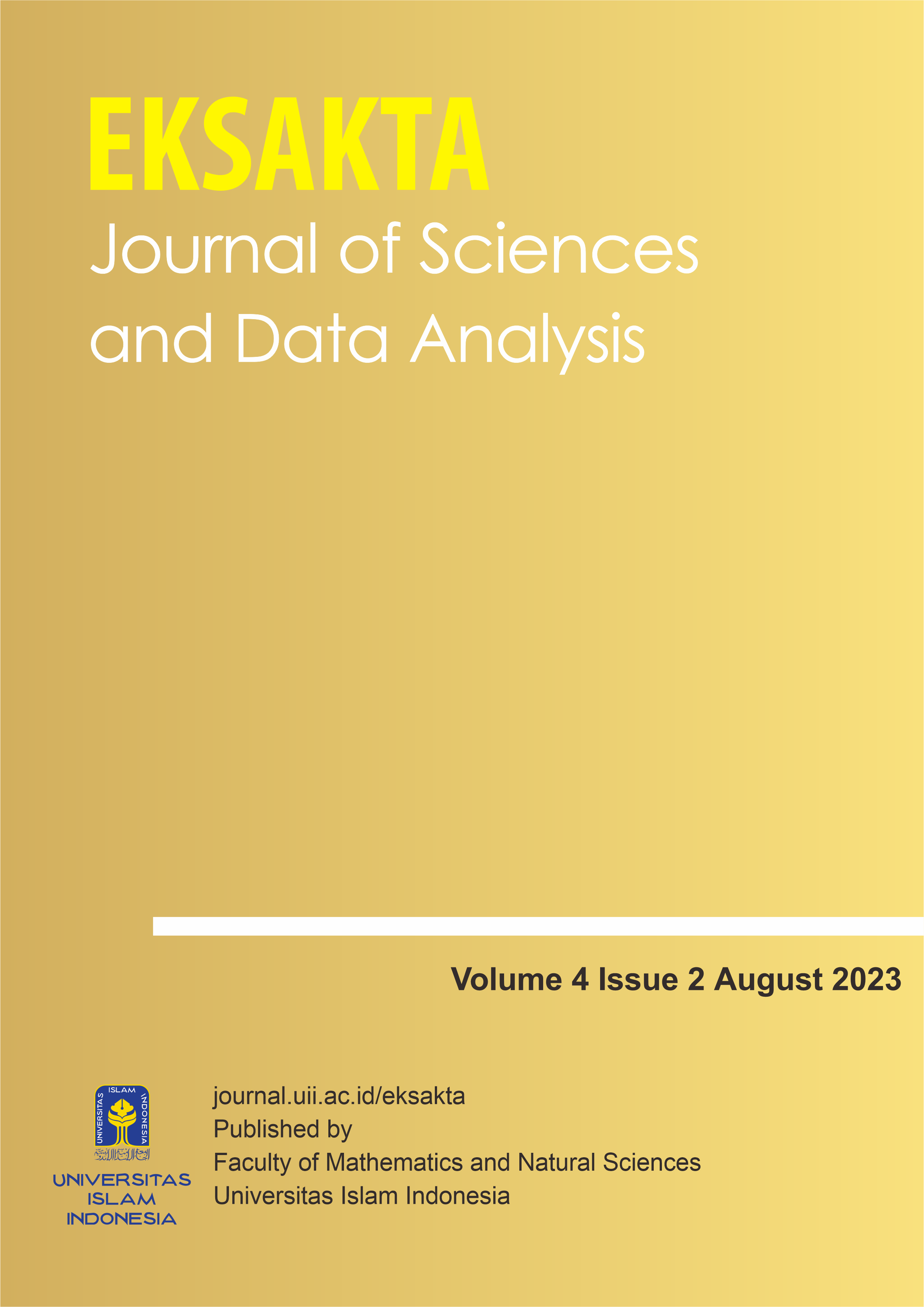Main Article Content
Abstract
The number of Covid-19 patients is the main thing to be concerned about in the time of pandemic, because Covid-19 can directly affect the sustainability of human life. Thus, adequate health services are needed in treating Covid-19 patients. One of the health services is home referral hospital. For example, in Batam City, there were 3 referral hospitals and one of them is a special hospital to hospitalized the Covid-19 patients. In this research, we were using queuing theory and Monte Carlo simulation to predict the queuing system of the patients. Queue conditions have levels density more than 100%, so that a hospital simulation is carried out using a minimum number of hospitals. It is obtained that at least 5 referral hospitals are required so that the density level becomes 83%. Based on the Monte Carlo simulation, it is suggested that the minimum number of hospitals is about three to four hospitals. When the minimum number is fulfilled, the average number of patients waiting to be treated and currently under treatment reduced to 3-4 people from the original, that is 4-5 people. The average waiting time to get treatment is about 5 minutes, originally 18 minutes and average waiting time to get treatment until it was stated that the condition had improved enough to be 5 hours which was originally 8 hours.
Keywords
Article Details
References
- T. Kakiay, Dasar Teori Antrian untuk Kehidupan Nyata, Andi Offset, Yogyakarta, 2004.
- A. Yani, Analisis Penerapan Sistem Antrian untuk Optimalisasi pada Pelayanan Pendaftaran Pasien BPJS, Mabiska Jurnal 3(2) (2018) 1-10.
- F. Astrelita, Sugito, T. Wuryandari, Analisis Antrian Pengunjung dan Kinerja Sistem Dinas Kependudukan dan Pencatatan Sipil Kota Semarang, Jurnal Gaussian 4(4) (2015) 837-844.
- R. Mahessya, L. Mardianti, R. Sovia, Pemodelan dan Simulasi Sistem Antrian Pelayanan Pelanggan Menggunakan Monte Carlo pada PT Pos Indonesia (Persero) Padang, Jurnal Ilmu Komputer 6(1) (2017) 15-24.
- N. Sahab, F. Butarbutar, Penerapan Model Simulasi Monte Carlo pada Line Assembling untuk Mengurangi Waktu Antrian di PT. XXX, Jurnal Industrikrisna, 14(1) (2019) 27-33.
- Sugiyono, Metode Penelitian Kuantitatif, Kualitatif, dan R&D, Alfabeta, Bandung, 2011.
- H. Taha, Operations Research: An Introduction Eighth Edition, Pearson Prentice Hall, USA, 2007.
- A. Ravindran, Operations Research and Management Science Handbook, CRC Press, New York, 2008.
- Sugito, M. Fauzia, Analisis Sistem Antrian Kereta Api di Stasiun Besar Cirebon dan Stasiun Cirebon Prujakan, Media Statistika, 2(2) (2009) 111-120.
- H. Barreto, F, Howland, Introductory Econometrics Using Monte Carlo Simulation With Microsoft Excel, Cambridge University Press, USA, 2006.
References
T. Kakiay, Dasar Teori Antrian untuk Kehidupan Nyata, Andi Offset, Yogyakarta, 2004.
A. Yani, Analisis Penerapan Sistem Antrian untuk Optimalisasi pada Pelayanan Pendaftaran Pasien BPJS, Mabiska Jurnal 3(2) (2018) 1-10.
F. Astrelita, Sugito, T. Wuryandari, Analisis Antrian Pengunjung dan Kinerja Sistem Dinas Kependudukan dan Pencatatan Sipil Kota Semarang, Jurnal Gaussian 4(4) (2015) 837-844.
R. Mahessya, L. Mardianti, R. Sovia, Pemodelan dan Simulasi Sistem Antrian Pelayanan Pelanggan Menggunakan Monte Carlo pada PT Pos Indonesia (Persero) Padang, Jurnal Ilmu Komputer 6(1) (2017) 15-24.
N. Sahab, F. Butarbutar, Penerapan Model Simulasi Monte Carlo pada Line Assembling untuk Mengurangi Waktu Antrian di PT. XXX, Jurnal Industrikrisna, 14(1) (2019) 27-33.
Sugiyono, Metode Penelitian Kuantitatif, Kualitatif, dan R&D, Alfabeta, Bandung, 2011.
H. Taha, Operations Research: An Introduction Eighth Edition, Pearson Prentice Hall, USA, 2007.
A. Ravindran, Operations Research and Management Science Handbook, CRC Press, New York, 2008.
Sugito, M. Fauzia, Analisis Sistem Antrian Kereta Api di Stasiun Besar Cirebon dan Stasiun Cirebon Prujakan, Media Statistika, 2(2) (2009) 111-120.
H. Barreto, F, Howland, Introductory Econometrics Using Monte Carlo Simulation With Microsoft Excel, Cambridge University Press, USA, 2006.




